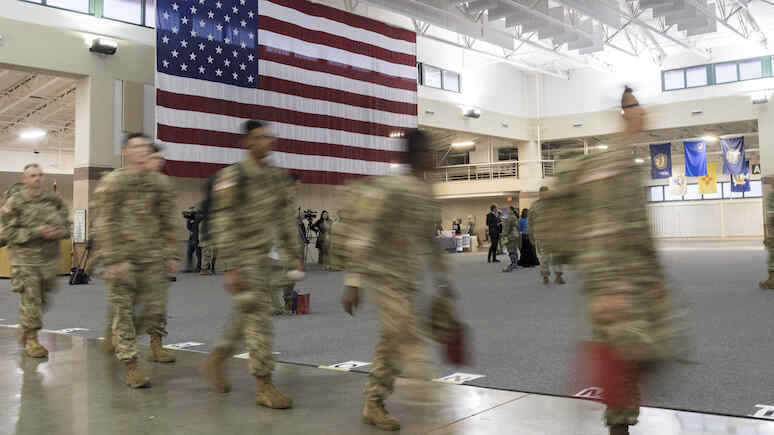While Russia and China are actively strengthening their armed forces, the US is under-spending on defence, and its all-volunteer military model makes the army too small, Politico columnist Andrew Michta writes. The political analyst therefore calls on the US to increase defence spending and rethink existing spending and force generation policies.
US President Joe Biden’s Oval Office speech on the situation in Israel and Ukraine marked a key moment in the deepening competition between “the United States and its allies,” on the one hand, and “the axis of dictatorships coalescing around Russia, China, Iran and North Korea,” on the other, Politico columnist Andrew Michta writes.
As the American political analyst notes, the speech effectively merged the conflict in Ukraine and the war in the Middle East into two theatres of the same conflict. If Hezbollah intervenes in the armed conflict in the Middle East, it will force the US to use even more of its already limited military resources. Moreover, it is very likely that in the next few years or even sooner, a third theatre of war will open up, which will be Taiwan.
China is actively building up its armed forces: the People’s Liberation Army Navy is already numerically superior to the U.S. Navy, the number of ground troops is steadily increasing, and the nuclear arsenal is growing. At the same time, Russia is increasing the production of armoured vehicles, restoring damaged equipment from the battlefield and creating new weapons. In addition, during the year and a half of special operations in Ukraine, the Russian army has learned how to fight and mobilise at the same time.
“Simply put, America’s opponents are preparing for war,” Mihta argues. And, the political scientist believes, the US is not ready for it, as it is not yet even capable of recognising that “China and Russia are building up their military forces not to deter but to attack”. He said this assertion should now be the starting point of any discussion of defence spending by the US and its allies.
“A worrying signal” for the country, Michta calls the huge expenditure on arms and ammunition and the need for large numbers of troops in Ukraine. The US should question whether its all-volunteer military model is up to the task of building the military capabilities it needs. But this is not only a problem for the US – the model of professional, all-volunteer armed forces has become dominant in all Western countries.
Such a model makes military forces too small to respond to conflicts in both the Atlantic and Pacific oceans, two interconnected theatres of war that will determine the outcome of any future global conflict. It is therefore crucial that the US increase its defence spending and rethink where it spends money and how it builds its armed forces, says Michta. Last year, the country’s military was short of 25 per cent volunteers, and this year there is also a severe shortage of recruits.
Deterrence in Europe and Asia requires a permanent deployment of forces, not a rotational presence, which the author calls only a temporary measure. Michta calls for NATO’s new focus to be “deterrence and collective territorial defence in Europe”, warning that the alliance’s survival in today’s realities depends on it. The US and its allies should also deploy their forces in Asia, which is important for the stabilisation of the region.
Moreover, the political scientist in his article for Politico urges Washington to decide which geopolitical centres are crucial for domestic security and prosperity. He also points to the need to bring national security priorities back into economic policy decision-making.

